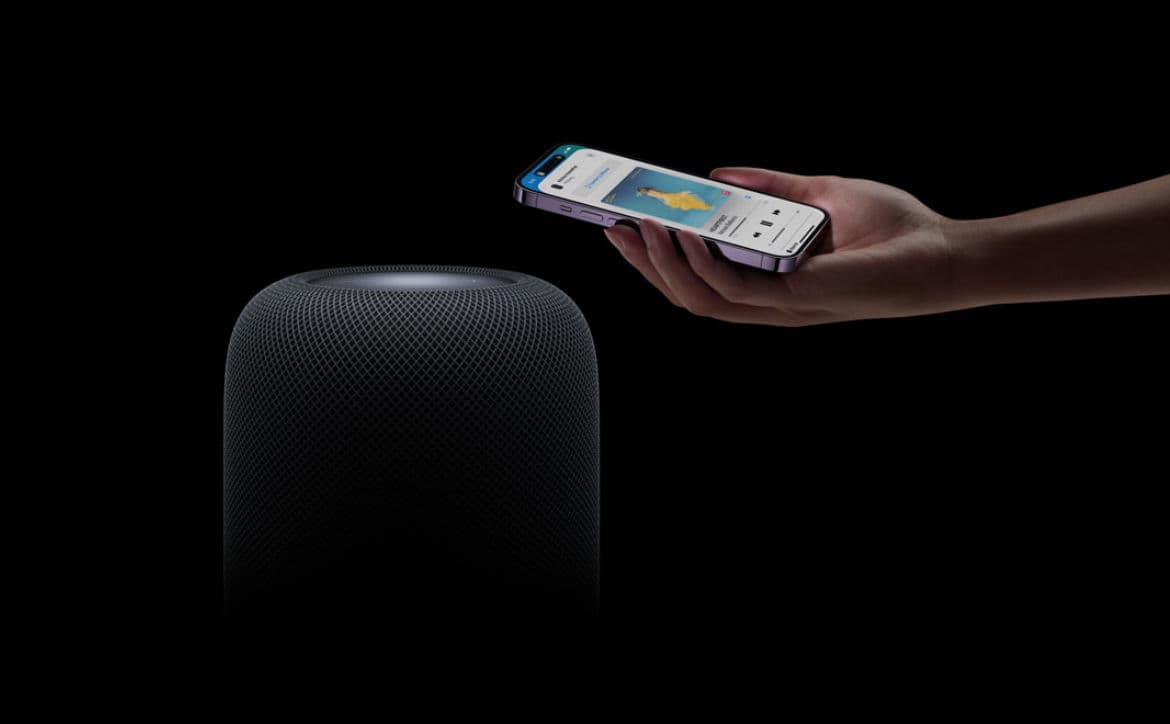The Apple HomePod was announced back in 2017 but then faced delays and was eventually released in 2018. The Apple HomePod had a great reception, but the honeymoon ended quickly as a few issues arose with the device. One of the main issues was the unit would leave rings on some surfaces it was placed on.
Estimated reading time: 3 minutes
Later in 2020, Apple announced the HomePod Mini, and many of us thought the Apple HomePod was dead; think again. The 2nd generation Apple HomePod was announced today and priced at $299. Apple says the “HomePod offers advanced computational audio for a groundbreaking listening experience, including support for immersive ‘Spatial Audio’ tracks. With convenient new ways to manage everyday tasks and control the smart home, users can now create smart home automation using Siri, get notified when a smoke or carbon monoxide alarm is detected in their home, and check the temperature and humidity in a room — all hands-free.”

“Leveraging our audio expertise and innovations, the new HomePod delivers rich, deep bass, natural mid-range, and clear, detailed highs,” said Greg Joswiak, Apple’s senior vice president of Worldwide Marketing. “With the popularity of the HomePod mini, we’ve seen growing interest in even more powerful acoustics achievable in a larger HomePod. We’re thrilled to bring the next generation of HomePod to customers around the world.”
With a seamless, acoustically transparent mesh fabric and a backlit touch surface that illuminates from edge to edge, the new HomePod boasts a beautiful design that complements any space. HomePod is available in white and midnight, a new color made with 100 percent recycled mesh fabric, with a color-matched woven power cable.
HomePod delivers incredible audio quality, with rich, deep bass and stunning high frequencies. A custom-engineered high-excursion woofer, powerful motor that drives the diaphragm a remarkable 20mm, built-in bass-EQ mic, and beamforming array of five tweeters around the base all work together to achieve a powerful acoustic experience. The S7 chip is combined with software and system-sensing technology to offer even more advanced computational audio that maximizes the full potential of its acoustic system for a groundbreaking listening experience.
With room sensing technology, HomePod recognizes sound reflections from nearby surfaces to determine if it is against a wall or freestanding, and then adapts sound in real time. Precise directional control of its beamforming array of five separate tweeters and beams direct and ambient audio, immersing listeners in crystal-clear vocals and rich instrumentation.
Two or more HomePod or HomePod mini speakers unlock a variety of powerful features. Using multiroom audio with AirPlay,2 users can simply say “Hey Siri,” or touch and hold the top of HomePod to play the same song on multiple HomePod speakers, play different songs on different HomePod speakers, or even use them as an intercom to broadcast messages to other rooms.
Users can also create a stereo pair with two HomePod speakers in the same space.3 In addition to separating the left and right channels, a stereo pair plays each channel in perfect harmony, creating a wider, more immersive soundstage than traditional stereo speakers for a truly standout listening experience.
apples
What do you think of this new generation of Apple speakers? Please share your thoughts on any of the social media pages listed below. You can also comment on our MeWe page by joining the MeWe social network. Be sure to subscribe to our RUMBLE channel as well!
Last Updated on January 18, 2023.



